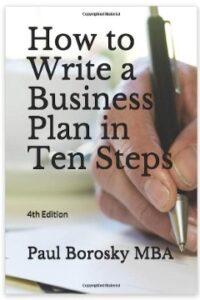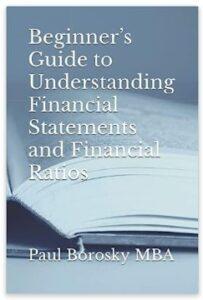How to Write a Daycare Business Plan
The daycare industry has experienced remarkable growth across the US over the past decade, fueled by various factors.
One significant contributing factor is the increasing number of millennials starting families, leading to a higher demand for daycare services as their children reach toddler and school age. Additionally, the prevalent two-income household trend has further amplified the need for quality and secure daycare facilities as more parents join the workforce. With the demand for daycare services steadily rising, the importance of a well-prepared daycare business plan becomes undeniable, transitioning from a luxury to a necessity.
To thrive in this competitive landscape and secure the necessary funding, daycare business owners must equip themselves with a comprehensive daycare business plan. This article offers valuable tips and tricks to help daycare entrepreneurs develop an effective business plan, create accurate pro forma financial projections, and even design a daycare business plan template. By utilizing these insights, daycare business owners can confidently chart their course toward success in the thriving daycare industry (7/23).
Click Here to Buy a Daycare Business Plan Template!
Executive Summary for a Daycare Business Plan.
The executive summary of a daycare business plan provides a concise overview of the critical aspects of the daycare company. Commencing with essential details like the daycare's name, address, and number of employees sets the groundwork for a comprehensive understanding of the business. Our daycare business plan writer suggests including additional crucial elements to paint a holistic picture of the daycare's operations and unique services.
This section should encompass a breakdown of the age groups serviced, outlining the range of children the daycare caters to. Additionally, highlighting the amenities available for the children, such as play areas, learning resources, and nutritious meals, underscores the commitment to providing a nurturing and enriching environment. Moreover, it is vital to mention any specialized services offered, such as school pickup and drop-off, which add convenience for parents and distinguish the daycare from competitors.
By briefly touching on these components, business owners can present an engaging and informative executive summary showcasing the daycare's operational scope and niche services. This executive summary is a powerful introduction, compelling investors and stakeholders to delve further into the comprehensive daycare business plan.
Company Information and Location for a Daycare Business.

The company information section of a daycare business plan begins by addressing the fundamental problem the company aims to solve for its customers. In this context, the primary concern is providing parents with a safe and nurturing environment for their children while they are at work. With this problem elucidated, other vital aspects of the company can be explored in detail.
Specifically, the company information section should elaborate on the ages of children catered to and the educational opportunities offered. Some daycares specialize in caring for infants through five years old, while others extend their services to one-year-olds up to 12 years old. This range of ages must be thoroughly discussed to ensure a comprehensive understanding of the daycare's target demographic. Moreover, as an essential element of the company information section, it is crucial to present a well-structured price strategy. Providing a range of prices for the different age groups and services offered will give readers valuable insights into the daycare's pricing approach.
By skillfully addressing these aspects in the company information section, daycare business owners can offer a compelling overview of their business model and showcase how their daycare will cater to parents seeking a reliable, safe, and educational environment for their children.
Need Help Writing a Day Care Business Plan?
Call or Text Paul, Doctoral Candidate, MBA.
321-948-9588
Email: Paulb@QualityBusinessPlan.com
Hours of Operation: Monday through Friday, 8 am to 9 pm EST.
CLICK HERE TO CONTACT US TODAY!!
Product Description and Competitive Advantages for a Daycare Business
The product description and competitive advantages section in a daycare business plan play a vital role in showcasing how the daycare differentiates itself from competitors in the local market. A strategic location, such as being near a busy office complex, can offer convenient solutions for working parents, allowing easy drop-off and pick-up of their children before and after work. This proximity becomes a clear competitive advantage that can be effectively utilized to attract busy professionals seeking reliable childcare services. The section should elaborate on how this advantage will be integrated into the daycare's operations, demonstrating a well-structured and executable plan.
The product description should also encompass a comprehensive overview of the daycare's offerings, including educational programs, age-appropriate activities, nutritious meals, and other value-added services to enhance the childcare experience. By highlighting the unique selling points and competitive advantages, daycare owners can attract potential clients and stakeholders, showcasing their ability to provide high-quality childcare services that meet the local community's needs. Crafting this section thoughtfully empowers daycare businesses to position themselves successfully in the competitive landscape, ensuring their relevance and desirability in the market.
Target Market for a Daycare Business.

Identifying the target market for a daycare business can be challenging as the actual clientele may only become evident once the business is operational. Nevertheless, it is crucial to have a general idea of the intended target market when starting a daycare venture. Tailoring the daycare's offerings to meet the specific needs and preferences of the target market enhances its appeal and potential success.
For example, suppose the daycare is located in an upscale neighborhood. In that case, the target market may consist of middle to high-income parents seeking exclusive daycare services focusing on proven educational programs and state-of-the-art learning resources. However, it is essential to remain flexible, as the actual customer base may differ from initial assumptions. Being receptive to evolving market demands and feedback allows adapting and optimizing the daycare's offerings. To refine the target market, conducting market research, engaging with potential customers, and evaluating competitor demographics are valuable steps. This data-driven approach provides insights and guides strategic decisions to maximize the daycare's appeal to the most relevant customer base.
In summary, the target market for a daycare business should be aligned with the services offered and the intended clientele. While initial assumptions are valuable, staying open to market dynamics and customer preferences fosters adaptability and growth potential.
Industry Research for a Daycare Business Plan
Conducting industry research for a daycare business plan involves analyzing national trends to inform strategic decisions. Valuable insights are gained by examining popular educational programs, unique amenities offered to children, and complimentary services that can supplement daycare revenues.
The research delves into widely used educational programs in the daycare industry, enabling the daycare to position itself as a provider of high-quality early childhood education. Exploring unique amenities offered by successful daycares nationwide inspires innovative ideas to enhance the daycare's services and create a positive experience for children and parents. Identifying complimentary services, such as tutoring for school-age children after regular school hours, not only generates additional income but also provides a competitive advantage.
Moreover, industry research investigates demographic trends, parental preferences, and emerging market demands to tailor offerings to meet specific target market requirements. By integrating comprehensive industry research, the daycare business plan gains data-driven insights, positioning the daycare for success and growth in the competitive childcare market. This research-driven approach forms a strong foundation, ensuring the daycare capitalizes on opportunities and effectively addresses industry challenges.
Owner and Management Section of a Daycare Business Plan.

A daycare business plan's Owner and Management section is vital in showcasing the owner's passion, experiences, and vision for the daycare organization. It should emphasize the qualifications and backgrounds of each manager and provide thorough background research on all staff members involved in child care, instilling confidence in parents regarding their children's safety.
This section highlights the owner's reasons for starting the daycare and their commitment to meeting the needs of parents seeking reliable childcare. It describes the managers' expertise in early childhood education, child development, and daycare management, demonstrating their qualifications to ensure high-quality care. Parents' paramount concern for their children's safety makes transparency crucial. The daycare business plan should provide a comprehensive overview of the background checks conducted on every staff member, assuring parents of the daycare's commitment to maintaining a secure and trustworthy environment.
By establishing the owner's dedication, showcasing the team's qualifications, and emphasizing safety protocols, the daycare business plan creates a positive impression on potential investors, parents, and stakeholders. This section is a testament to the daycare's focus on exceptional care and nurturing for every child under its supervision. Ultimately, the owner and management section is crucial in inspiring confidence in the daycare's ability to provide children with a safe, enriching, and trustworthy environment.
Funding Request for a Daycare Business Plan
The funding request for a daycare business plan should outline the specific financial requirements, ranging from basic amenities for an in-home daycare to substantial investments in a multi-million-dollar facility catering to diverse age groups. To effectively present the funding needs, it is essential to break them down into various categories.
For a daycare startup, funding needs typically include purchasing inventory for meals and snacks, investing in advertising through social media and the internet, acquiring suitable land and equipment, and potentially obtaining vehicles for safe transportation of children to and from school. Each category should be identified with the corresponding dollar amount allocated. Moreover, in the funding request, it is crucial to highlight the rationale behind each financial requirement. Whether it is to enhance the quality of educational resources, ensure children's safety, or expand marketing efforts, providing a clear justification helps instill confidence in potential investors.
Concluding the funding request, a comprehensive total should be presented, summarizing the overall amount needed for startup. This figure showcases the financial commitment required to establish and successfully operate the daycare. By presenting a well-structured and justified funding request, daycare entrepreneurs can demonstrate a thorough understanding of their financial needs and attract potential investors who recognize the viability and potential for growth in the daycare business.
Pro Forma Financials for a Daycare Business Plan.
The financial section of a daycare business plan begins with a focus on weekly revenues. To provide a clear financial outlook, revenues should be segregated based on different age brackets, aligning with the expected prices charged for each group. Identifying complementary services, such as transportation fees or additional snack charges, enhances revenue projections.
After calculating weekly revenues, expanding them to monthly projections is essential. This step provides a comprehensive view of the daycare's anticipated financial performance. The next crucial aspect is to list monthly costs, including rent, utilities, food, and transportation. By detailing all costs, the financial section becomes more accurate and informative. Once the costs are totaled, deduct them from the monthly revenues to arrive at a basic monthly profit and loss statement. This statement forms the foundation for assessing the daycare's financial viability and profitability.
To strengthen the financial section, incorporate other financial statements, such as balance sheets and cash flow projections, to provide a comprehensive view of the daycare's financial health. By meticulously outlining the financials, daycare entrepreneurs can demonstrate a clear understanding of revenue streams, expenses, and projected profits. This information is a valuable tool in attracting potential investors and lenders, showcasing the daycare's financial viability and potential for success.
Hopefully, these insightful tips and tricks for writing a business plan were helpful. If you need help with a business plan or financial projections, email or call us.
Author: Paul Borosky, Doctoral Candidate, MBA., Author
Owner of: Quality Business Plan and Quality Business Consultant.
Date: 7/23/23